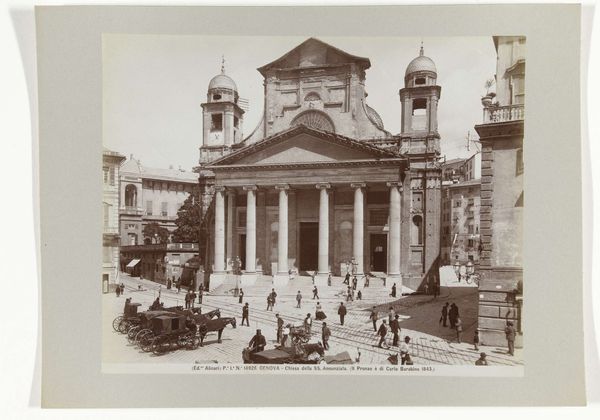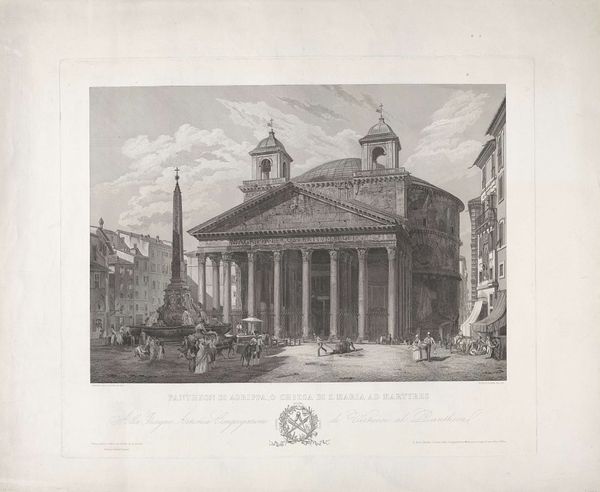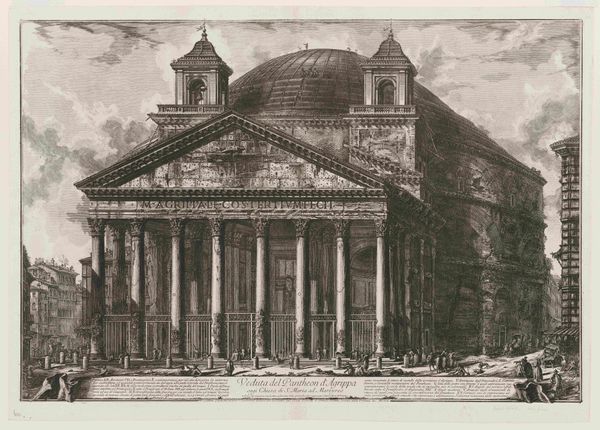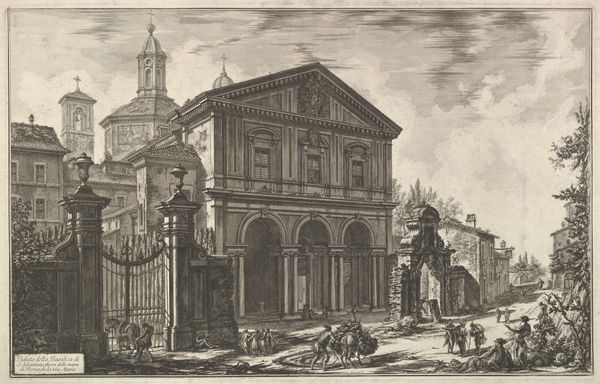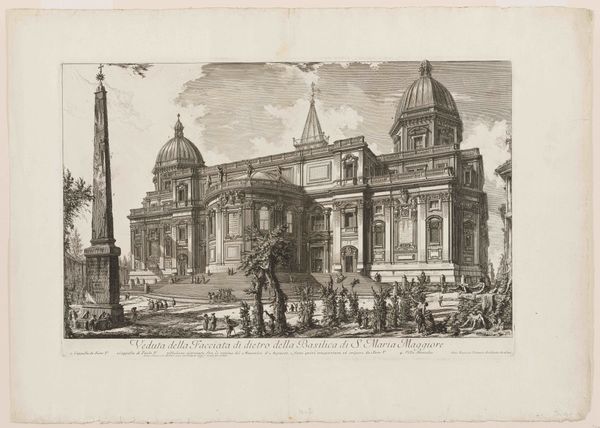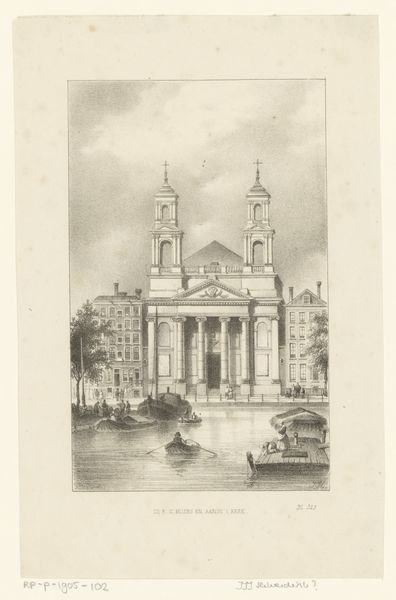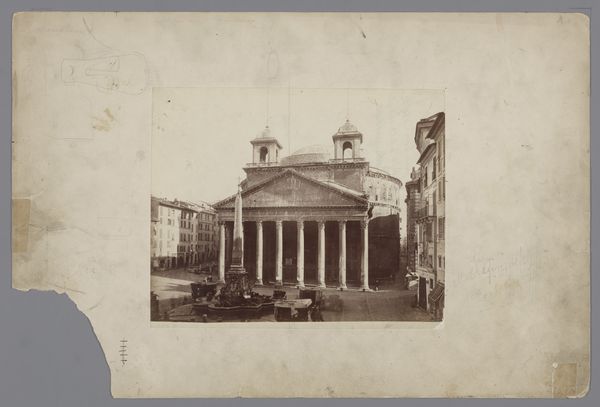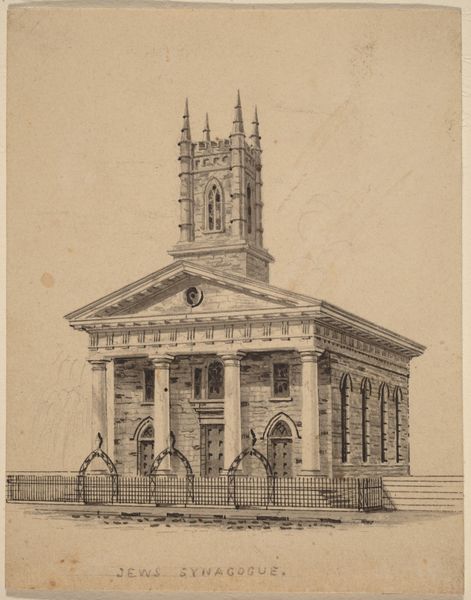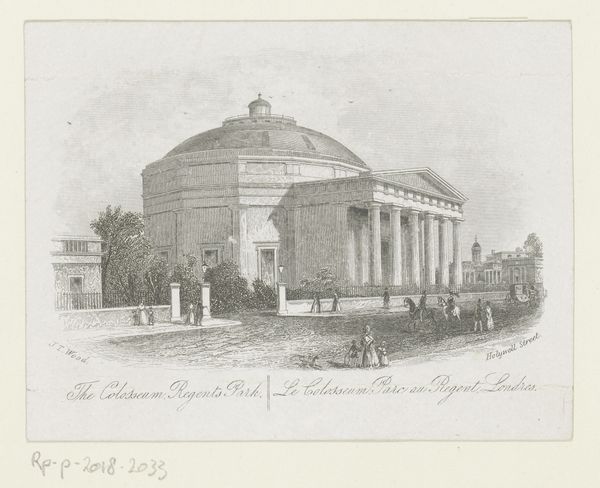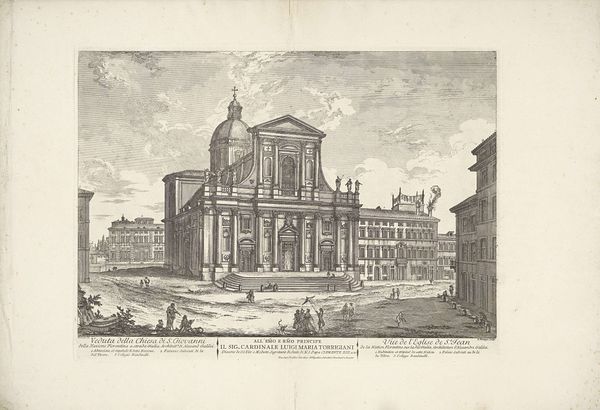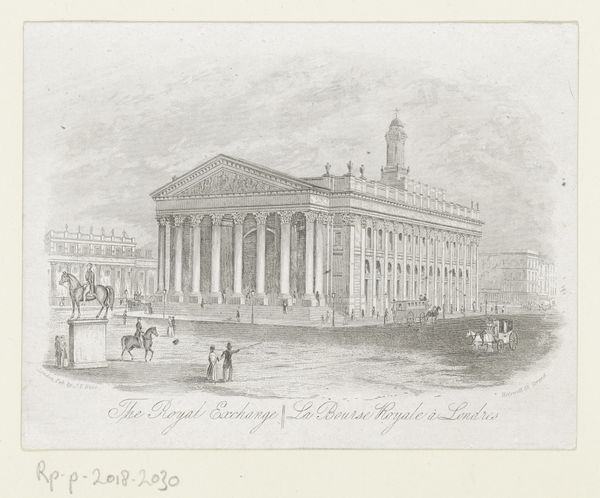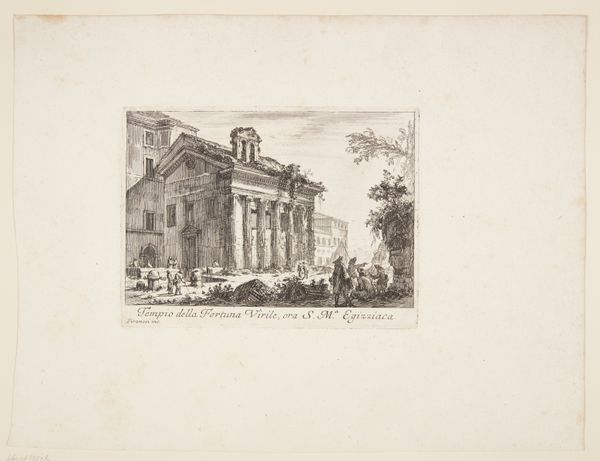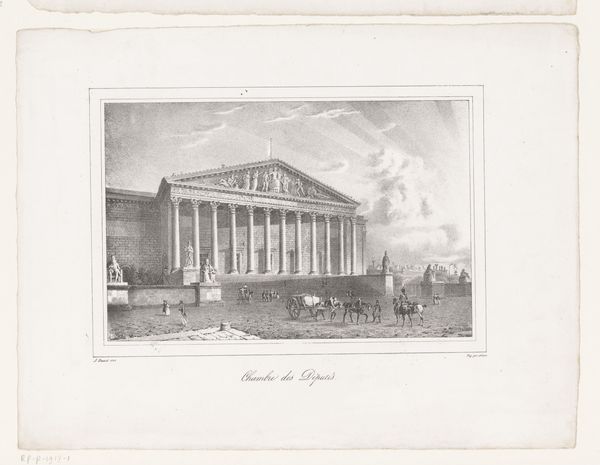
Dimensions: height 212 mm, width 219 mm
Copyright: Rijks Museum: Open Domain
Gustav Bauernfeind made this print of the Pantheon in Rome using a technique called wood engraving. The image is built up from a dense network of precisely cut lines and marks on a block of wood. Look closely, and you'll notice the incredible level of detail, achieved through laborious and exacting skill. The original drawing would have been transferred to the wood, and then a specialist engraver used sharp tools called burins to carve away the areas that would remain white. The remaining raised lines would then be inked and printed, creating the image you see. Wood engraving was a popular method for mass producing images in the 19th century, before the advent of photography-based printing techniques. So, in a way, this image speaks to the rise of visual culture and the democratization of art through industrial processes. It’s a compelling example of how a meticulous craft tradition found new life within the context of mass production and consumption.
Comments
No comments
Be the first to comment and join the conversation on the ultimate creative platform.
